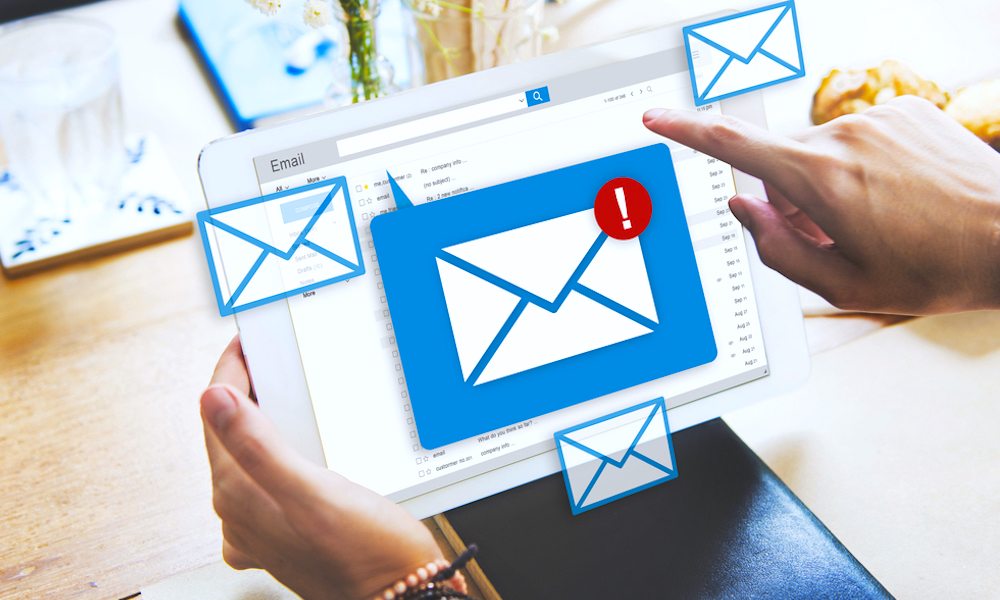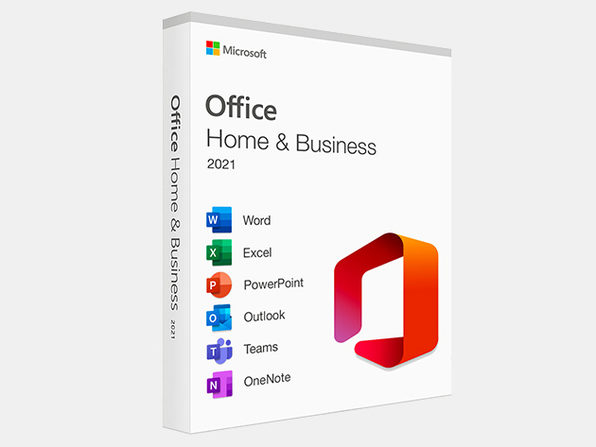How to Spot a Scam Email

Toggle Dark Mode
Online scams are a dime a dozen. Unfortunately, some bad people are always trying to take advantage of others, no matter the platform.
Moreover, email scams remain one of the most common methods hackers and malicious actors use to deceive people. While you might think you’d never fall for one, no one, no matter how smart they are, is safe from any scam or online attack. Scammers are becoming increasingly skilled at making fake emails appear authentic. They use panic, urgency, and fear to push you into clicking something or giving up personal info without thinking twice.
Fortunately, there are plenty of signs you can look for to spot these scams before they cause real damage. Here are some of the most obvious red flags that can help you tell a scam email from the real deal.
The Email Tries to Create a Sense of Urgency
One of the first signs you’re dealing with a scam email is the tone. If the message tries to rush you, for instance, by claiming your account is about to be suspended, you need to verify your identity immediately, or your password was recently compromised; it’s likely trying to scare you into clicking on a shady link.
The fear and sense of urgency are intentional. The scammer wants you to act before you have time to think clearly. Phrases like “act now,” “account will be closed,” or “your access has been limited” are put in the message to make you panic.
After all, if someone is telling you that someone got into your bank account, it’ll be hard not to try to fix the issue as soon as possible.
With that said, if you get an urgent email like this, take a deep breath and slow down. Never click links or attachments until you’ve verified the email’s authenticity. Visit the company’s website or contact their support team via the official website or social media profile.
The Email Is Full of Typos or Awkward Language
Some scammers don’t know English very well. Others don’t really bother to write a good, convincing email to attack their victims. Whatever the reason may be, this is a blessing in disguise, as it helps us determine if an email is legitimate or not.
Legitimate companies hire teams of writers and editors to make sure their emails are clear and professional. Scam emails, on the other hand, are often filled with typos, strange sentence structure, and incorrect grammar.
If you see phrases like “Your acount has been temoporarly locked. Clik here to regain acess,” you’re not just dealing with a typo — you’re looking at a likely scam.
It’s worth noting that scammers sometimes do this intentionally. They want to weed out more skeptical recipients and focus on folks who won’t notice the mistakes, making them easier marks. Regardless of why they do it, you should be on the lookout whenever you read an email.
The Sender’s Email Address Doesn’t Look Right
Scammers are good at spoofing names, so an email might say it’s from Apple, PayPal, or even your own bank, but the actual email address tells another story.
Always check the full email address, not just the name. A message from “Apple Support” might actually come from something like “support@apple.verifylogin123.com,” which has nothing to do with Apple.
The email address’s domain name (everything after the “@”) is the most important part. To continue with the previous example, real emails from Apple will come from addresses ending in “@apple.com,” not from unfamiliar or unverified domains.
So if a big company like Amazon is sending a message from an address that ends in @gmail.com, chances are it’s fake. Of course, if you tend to deal with smaller companies, it’s highly likely that some of them will still use “@gmail.com” or similar addresses for mainstream free email services. If that’s the case, ensure the first part of the address is properly written and looks correct.
If the domain or the complete email address seems off, that’s a huge red flag. Delete the email or report it to the company’s phishing department. If you’re unsure about the legitimacy of the email address, you can try contacting the company using a different email address or directly through its website.
The Message Includes Suspicious Links or Attachments
More often than not, the goal of scam emails is to trick you into clicking on a website or downloading something. Clicking on the wrong link can install malware on your device or direct you to a fake login page that looks identical to the official website, but is there to steal your credentials.
Avoid clicking any links unless you’re absolutely sure where they go. Sometimes, the scammer will just share the website’s URL, which lets you read it before you click it. On the other hand, if they try to hide it by inserting it into text, you can usually preview the URL by hovering your mouse over a link on your computer. If it leads to a sketchy or unfamiliar website, don’t open it.
Additionally, be careful of attachments, especially if the file ends in .zip, .exe, or .scr. These can carry malware that compromises your system.
The Email Domain Doesn’t Match the Brand
Even if the message’s links look clean, the domain behind them can give them away. Some scam emails look convincing at first glance, but a closer look at the sender’s email domain tells you all you need to know. If a message claims to be from Amazon but the sender’s address ends in “@amzn-support.net” or something equally strange, it’s a fake.
Or, if you get an email from “Apple” but its website link is something like “Appple.com,” this is an immediate red flag that you shouldn’t click on it.
Likewise, if a big company like Google, Amazon, or your bank contacts you but their URL doesn’t end with “.com,” there may be something fishy going on.
This doesn’t apply to all companies, as the “.com” URLs are harder to come by nowadays, but it’s still worth keeping in mind for established businesses. It can also vary by country, as many banks, businesses, and other organizations outside of the US use their own country’s top-level domain, like .ca for Canada, or .uk for the United Kingdom.
Overall, always compare the domain of the email address to the official site. A real Amazon email will come from “@amazon.com.” A real message from FedEx will not have the domain name “@fdx.com.” Big companies don’t add extra dashes or have weird spelling.
You’re Asked to Provide Personal or Financial Info
Legitimate companies will never ask you to reply to an email with your password, social security number, or banking information. If you receive a message requesting sensitive details, it’s almost certainly a scam.
Scammers might ask for:
- Your full name
- Date of birth
- Credit card or bank info
- Passwords or PIN numbers
You should never, under any circumstances, share these details with anyone, especially online. That goes double if a stranger is asking these details via email.
If an email asks for this kind of information, delete it immediately. Contact the company directly through their website or official email address, and do not reply to the message you just received.
The Offer in the Email Seems Too Good to Be True

Have you ever been contacted by a Nigerian prince trying to give you his fortune? You’re not the only one, but there’s a reason why these ridiculous scams still exist: they work.
It sounds exciting to win a free iPhone, receive a government grant you didn’t even apply for, or get a huge prize from Mr. Beast (even though you never watch his videos) — but it’s probably a scam.
These messages are bait. Just like the messages telling you that your account has been blocked, they’re designed to make you feel urgency to pick up your prize and not stop to think about why you’re getting a prize in the first place.
These messages want you to click, fill out a form, or send money for “shipping fees.” Once you do, the scammer either steals your info or vanishes with your cash.
If the deal seems over-the-top generous, trust your instincts and steer clear.
The Email Uses a Generic Greeting
If a company that you regularly deal with, like Amazon or your bank, is really contacting you, they’ll address you by name, because they already have access to that information. Scam emails, on the other hand, often begin with generic greetings like “Dear customer,” “Dear user,” or simply “Hello.”
That’s because they don’t actually know who you are. They’re sending the same message to thousands of people, hoping someone takes the bait. That’s actually good news; it means they don’t have access to all your data, so be sure to keep it that way.
If an email doesn’t include your name — and especially if it includes other red flags on this list — it’s best to delete it and report it as spam.
The Message Tries to Manipulate You Emotionally
Scam emails often rely on emotional triggers like fear, guilt, embarrassment, or even hope. You might receive a threatening email claiming you’re under investigation, or one that demands you pay them money to stop them from releasing compromising information about you.
Again, the goal is to get you to panic, forget about logic, and act immediately. Don’t fall for it. Take a step back and evaluate the message rationally. If it sounds sketchy, it probably is.
You Weren’t Expecting the Email
Sometimes the biggest clue is your own memory. If you receive a receipt, invoice, or shipping confirmation for an item you never ordered, be cautious.
This tactic is meant to confuse you. You’re more likely to click “cancel order” or “dispute charge” if you’re worried you’ve been billed for something you didn’t buy — but those links often lead to phishing pages designed to steal your login details.
Always check your actual accounts before reacting. If nothing’s there, ignore the email.
Some Tips to Help You Stay Safe
Nowadays, it seems like everyone is trying to get a hold of your information. And unfortunately, online scams are far from over. The good news is that there are ways for you to stay safe online. Granted, you can still be at risk, but following these tips will make it more difficult for scammers or hackers to target you.
- Use Two-Factor Authentication on all your important accounts.
- Report phishing attempts to the company being impersonated.
- Don’t reuse passwords across multiple sites.
- Check the sender’s full email address, not just the display name.
- Keep your system and antivirus software updated.
Stay Safe Online
Being aware of these tricks is your best defense. The more you practice spotting scam emails, the easier it becomes to avoid them. Don’t let fear or curiosity override your common sense, and when in doubt, ignore and delete the email.
It’s always better to miss one real message than to fall for a fake one and end up being scammed. Stay safe online and think before you click.











